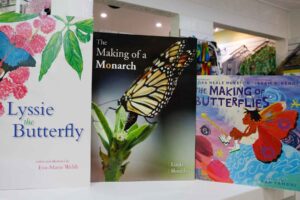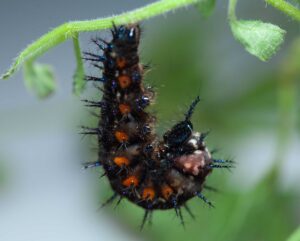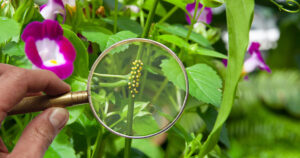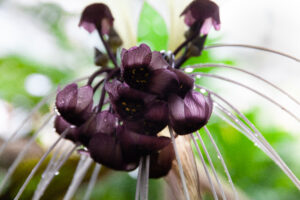Museum | Lepidoptera | Kuranda History | Educational Tourism | Insect Pinning
Our museum comprising over 400 butterflies and moths certainly does draw a keen eye. Paul and Sue Wright thought as much when they opened the doors to the Australian Butterfly Sanctuary in 1987. Starting from humble beginnings, their dream of turning their butterfly hobby into an iconic attraction in tropical North Queensland undoubtedly came to fruition. Not only were the Wright’s breeding butterflies to showcase alive in a flight house, but they also took to displaying museum-curated specimens.

Approximately half of the Wright’s collection remains on display in our museum today. It includes the majority of Australian butterflies, the wall of Monarch butterflies, and a mix of Australian and international moth specimens. In 2016 the Woodward Family, who took full ownership of the Australian Butterfly Sanctuary in 2007, decided half of the collection would be replaced with more intact specimens. Indeed, after almost 30-years of average lighting conditions and endless power-outages in the small rainforest town of Kuranda, the appropriate time had come.

In 2017, new Australian and international butterfly specimens were purchased from a local collector. These were installed with the assistance of our current laboratory assistant, David. Arrival of the new collection provided an opportunity to display specimens significant to tropical Australia, Papua New Guinea, Southeast Asia and more broadly South America. It also quickly translated into improving communication, from an educational tourism standpoint, of their national and international taxonomic importance.
“I can physically see the similarities and differences between closely related butterflies – how some have developed to avoid predators, use of their wing colour and even reading about the fact that some are extremely toxic … it’s so intriguing” Brett Walker, visitor 2022

Chemicals are not used in the ongoing preservation of our butterflies or moths (but see note above describing initial use). After being air-dried, pinned (or ‘mounted’) and framed, each display cabinet is carefully monitored and kept at an average temperature of 26 degrees. Of course, risks to the collection are the same as in any other establishment … bugs, power outages and lighting issues. In Kuranda, with an average annual rainfall of 1600mm, dampness and growth of mould is also a real threat. But, maintaining this collection is absolutely worth all the effort. It is after all, the largest publicly accessible display of tropical butterflies in Far North Queensland.
Since the late 1980s, the Australian Butterfly Sanctuary Museum has captured the fascination of many people. It’s admired for its array of colour, beauty and intricacy. It holds specimens significant to tropical rainforests across, Australia, Southeast Asia and South America. Millions if not billions of photos have been taken. But, most importantly, our museum has sparked conversation – each time a seed planted celebrating the curiosities and complexities of our natural world.
Acknowledgements
Thank you to our expert staff, Suzy, Robin & David, for providing photographs & information about the history of the Australian Butterfly Sanctuary Museum. Our staff wish to thank visitors who have shown great interest in our collection & who have initiated many interesting discussions!






